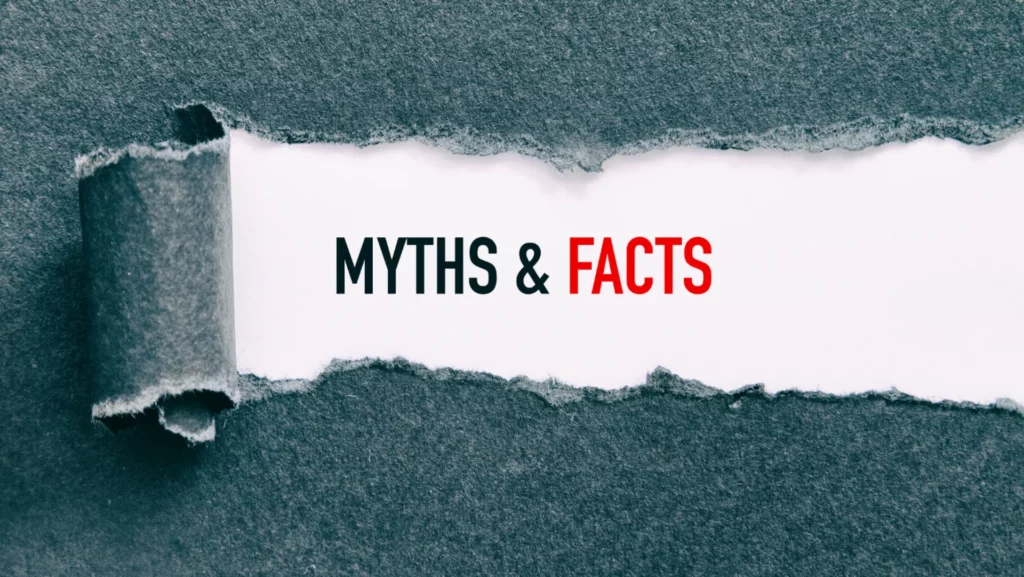There are lots of myths surrounding back pain, making it hard to know what to do if you have it. In this blog, we decipher the most common back pain myths, to help you take better care of your back if you’re in pain.
MYTH: Back pain means damage or injury
While in some cases this is true, back pain doesn’t necessarily mean serious damage or injury. We can use the concept of a paper cut to explain. Paper cuts hurt, sometimes a lot. But even though it can feel very painful, the actual damage that caused the pain is minimal.
And the same can be true with backs: intense pain doesn’t necessarily mean there is significant damage to the back. This is because the level of pain you feel is a reflection of the level of threat your brain thinks it is under. The brain determines the threat level as a result of the information it receives from your body and your environment, as well as from memory of past experiences and beliefs about pain. If your brain thinks there’s a threat, it creates pain to let you know there is a problem. It’s a built-in protection mechanism that can create pain even if there is only a chance of damage or injury. To find out more about the links between pain and injury, watch this short TEDEd video on the mysterious science of pain.
MYTH: Painkillers will speed up your recovery
Painkillers can be useful when it comes to reducing pain in the short term. This is because reduced pain can help you start moving earlier after an injury, and keeping moving while you’re in pain can often be helpful. However, we would also recommend alternative recovery aids if possible, such as using a heat pack, gentle home stretching, and short walks within your pain tolerance. These activities will help your back to relax, which in turn will help reduce your pain and allow you to return to higher levels of activity. And, as most back pain is ‘mechanical’ in nature, we’d also recommend being checked out by a chiropractor or osteopath.
MYTH: You should always rest a bad back
In fact, bed rest may even worsen your back pain unless your pain is so severe that you can’t move. This is because without exercise, muscles can become weak, deconditioned and stiff. So, while total rest may seem like a good way to recover, often continuing moderate physical activity will help in the long run. Try reducing back pain by resting to calm the pain and then following up with gentle to moderate exercise. This will help build and maintain strength and flexibility in the spine and improve posture.
MYTH: Poor posture causes back pain
The idea that poor posture causes back pain is one of the top back pain myths. This is because it’s not actually posture that’s the problem, it is our increasingly sedentary lifestyles. Our spines are designed for active living, so sitting for long periods of time e.g. in a car or at a desk, can lead to posture related pain as it can place stress on the spine. Combat this by taking breaks every 20-30 minutes to make sure you’re not stuck in the same position for too long. You can also try swapping work stations during the day or taking phone calls standing up instead of sitting down to help build more movement and a variety of positions into your day.
MYTH: Lifting causes back pain
Bending and lifting are often portrayed as causes of back pain and sometimes we avoid them for fear of damaging our backs. If you pick something up awkwardly, however, it’s more likely to cause a mild strain or sprain than an injury in most cases. In addition, it’s not that lifting is a cause of back pain, it’s that we are unaccustomed to the loads that we are lifting or how often we are lifting them. As such, those who lift should focus on gradual strength training over time, to build up and get used to the weights they’re lifting, whether it’s in the gym or at work. The way that we lift things is often a factor too. For advice on how to lift without damaging your back, see the British Chiropractic Association’s Lifting and Carrying advice sheet.
MYTH: Exercise, especially weight training, will make back pain worse
Exercise has been shown to be the best intervention for treating acute back pain (pain that’s lasted six weeks) and chronic back pain (three months and over). There are also recent studies on the long-term safety of lots of different exercises, including weight training, and it’s been shown to have great benefits. If you’re weight training and your back pain is getting worse, it’s most likely due to moving up through the weights too quickly and lifting beyond your capacity. To avoid this, start small, and slowly build up the amount and intensity.
MYTH: You can stop doing your exercises once the back pain is gone
Many people stop doing the things that helped them get rid of the pain once it stops, but it’s important to keep doing your exercises to help keep back pain at bay.
We hope this blog has helped bust a few misconceptions you have have had about back pain and will help you take better care of your back in the future. If you have any further questions about back pain myths or back pain in general and how we can help though, please do just get in touch. For more tips on how to avoid back pain, see our blog ‘Five easy steps to prioritise your back health‘.
